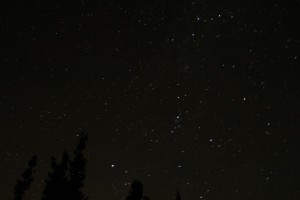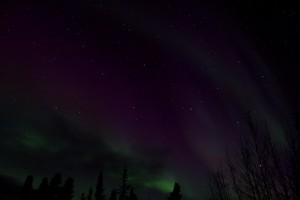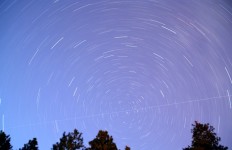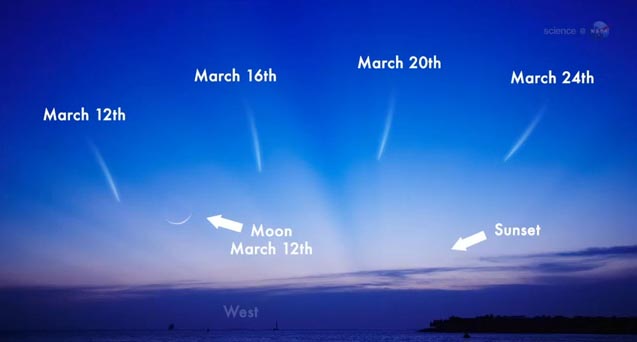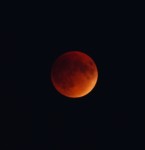Shooting stars are always exciting to see. Sometimes I only see them out of the corner of my eye, other times I’m lucky enough to be looking at the right part of the sky at the right time.
Despite resemblance in brightness and size, shooting stars are not stars streaking through the sky but instead are meteors. Meteors have nothing to do with stars. Meteors are bits of interplanetary rock or debris that have fallen or broken off comets or asteroids and enter Earth’s atmosphere. Outside of Earth’s atmosphere, these rocks are called meteoroids.
Most meteors are smaller than a garden pea. Larger meteors do exist but they are less common. Meteors that are barely visible to the naked eye are usually only 0.55 millimeters in diameter–that’s smaller than a grain of rice!
When a meteor streaks across the sky, we aren’t seeing the meteor itself. We see the light emitted from reactions between the friction of the rapidly moving meteor with the gases in the atmosphere.
Meteoroids enter the atmosphere at tremendous speeds–between 25,000 to 160,000 miles per hour. They quickly ignite from searing friction with the atmosphere. The outer layer of the meteor is vaporized and stripped away due to high speed collisions with air molecules.
The composition of a meteor and the colliding air molecules are responsible for a meteor’s color. Since the source of meteors varies, the elements within the rock or debris varies. When vaporized, each element emits a signature color. Meteors containing sodium will be orange-yellow, iron will be yellow, magnesium will be blue-green, nickel will be green, and ionized calcium will be violet. When a meteor appears red, the reactions of the atmospheric nitrogen and oxygen atoms are overpowering the reactions of the elements in the meteor.
A meteor’s velocity can also impact its color and brightness. Slow meteors tend to be red or orange while fast meteors are frequently blue. Faster meteors are also brighter.
Most meteors only streak across the sky for a short time before they burn up in the atmosphere, typically between 60 to 80 miles above the Earth’s surface. If a meteor does make it to the Earth’s surface, it is called a meteorite.
Interestingly, most meteorites tend to be from slow meteors. Nearly all meteorites originate from astroids but astroid-originated meteors only comprise five percent of the meteor population. The other 95 percent of meteors originate from comets and they rarely make it to the Earth’s surface.
Meteoroids originating from astroids are created when something collides with the astroid and a piece is chipped off. These meteoroids typically create the sporadic meteors not associated with meteor showers.
Comet-originated meteors are the ones seen during meteor showers. As a comet orbits around the sun, the heat from the sun causes the comet’s outer layer to vaporize and particles to “fall off” in the form of comet dust.
If the comet’s path crosses Earth’s orbit, then a meteor shower will occur when Earth passes through the comet dust every year. Since Earth encounters the comet dust at the same time every year, meteors seem to radiate from a specific constellation in the sky every time. Meteor showers receive their name by the constellation they radiate from. For example, the Leonid meteor shower radiates from the constellation Leo.
November is when Earth passes through the comet dust that creates the Leonid meteor shower. The Leonid shower begins on Nov. 13 and ends of Nov. 21, with the peak around Nov. 17 or 18. At the peak, up to 10 meteors per hour will be visible. However, the Leonid meteor shower is cyclic like sunspots and has a cyclic peak every 33 years that is associated with the return of its parent comet into the inner solar system. During this cyclic peak, hundreds to thousands of meteors can be visible every hour–but that peak won’t be until around 2028.

